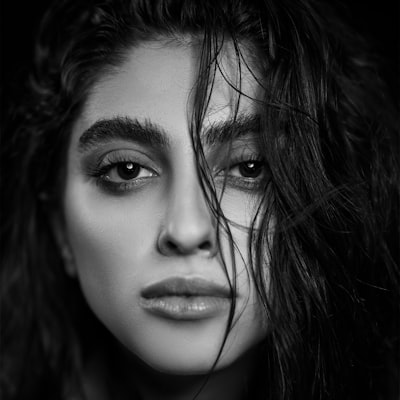From the Terraces to the Streets The Journey of Football Casuals

Football Casuals A Subculture Defining Passion and Style
It's more than the game of football; for some, it's a way of living. While there are many fan subcultures that have emerged over the decades there is none that is as distinct and well-known as casuals of football. They are rooted in the terraces of the UK Casual movement is a mix of love for football, a love for fashion as well as an aura of protest. This article discusses the history, origins, and impact of casual football.
C.P. Company of Football Casuals
The movement for casual football started in the late 1970s and during the first half of the 80's United Kingdom. It was born out of the desire to stand out in an audience of football lovers most of whom were associated with the punk and skinhead culture. Casuals wanted to differentiate themselves from the punk or skinhead crowd, and they did so by embracing high-end sportswear and fashionable clothing.
Brands like Fila, Lacoste, Ellesse, and Sergio Tacchini have become the clothing of the casual crowd. They were synonymous with exclusivity and style, strikingly different to the more rugged and rebellious appearance of some fan groups. Fans of football coming back from European away games brought back clothes that were not readily offered in the UK which sparked a new trend that would soon sweep across the nation.
The Style That Defined a Subculture
At its core, the casual trend is all about fashion. The casual look usually includes:
Designer Tracksuits: Brands like Fila along with Adidas were the go-to for tracksuits, often in vivid colors and in unique designs.
Stonewashed Denim: Paired with casual trainers Denim was a go-to to wear on a match day.
Iconic fashion trainers from Adidas, especially models like the Samba along with the Gazelle designs, were made famous in the casual world.
Outerwear jackets from designers such as CP Company, Stone Island and Burberry created a practical, but fashionable look to the outfit.
Accessories: Casuals often sported baseball caps and scarves, subtly blending club colors with their high-fashion clothes.
The obsession with fashion did not only revolve around looking nice It was also a way of avoiding detection. By dressing inconspicuously in designer wear, casuals could blend into crowds and escape authorities at games, especially during a time in which football violence was rampant.
The Culture of Football Casuals
Beyond fashion, football casuals embodied a culture of loyalty and camaraderie. The movement was based on three principles:
Football: Casuals were, in the first place, devoted fans to their respective teams. It was a sacred day to play, and supporting the team was an act of honor.
Territorial Pride: Casuals were a representation of their region, and matches often became arenas where rival groups could take on the upper hand. This territorial aspect fueled tensions that could escalate to fights.
Unity and Identity: The casuals' distinctive style gave them a sense of belonging. Wearing the identical brands and sharing the same passions created an intimate community.
Although the casual fashion has at times been linked to violence, it's important remember that not all casuals participated in violent activities. For many, it was a matter of being a fan of soccer and expressing their individuality by wearing fashion.
The Evolution of the Casual Movement
The casual scene has grown substantially since its inception. In the 1990s, there was declining numbers as football became more commercialized and the game's traditional working-class roots diminished. However, the casual style never truly disappeared; it changed and adapted.
The influence of casuals can be seen in fashion trends. Brands such as Stone Island and CP Company that were once considered to be niche labels for the terraces, are appreciated by celebrities as well as fashion avids. The revival old-fashioned sportswear have brought iconic Adidas tracksuits, trainers and Fila tracksuits back in the spotlight.
Modern footballers continue to adopt elements of a casual, relaxed style and mix it with modern streetwear. The legacy of the game is evident both in the stands and on the streets.
Casuals in Popular Culture
The football casuals have left a lasting mark of popular culture. Films such as The Football Factory and Green Street have depicted the lifestyle, albeit often focusing on its more violent aspects. Likely, genres of rock like Britpop in the 1990s were heavily influenced in part by casual fashion and rock stars like Oasis and Blur adopting the fashion.
Social media also plays in keeping the trend alive. Platforms like Instagram provide modern interpretations of casual style, inspiring new generations of football lovers to embrace the style.
The Global Spread of the Casual Movement
What started in the UK has spread across the world. Casual football wear is a common sight in countries such as Italy, Russia, and Brazil Each one adding its distinctive twist to the trend. The love for football and fashion transcends boundaries as it brings together fans of one universal society.
In areas like Italy casual wear has been incorporated into elements of high-fashion brands like Gucci and Prada and reflect the country's deep-rooted fashion heritage. If you're in Eastern Europe, the movement usually adopts a utilitarian and rugged aesthetic, blending streetwear with the more traditional casual look.
Conclusion
The movement of casual football is a fascinating blend of fashion, sport, and subculture. Its influence extends far beyond the pitch, forming styles of fashion and influencing pop culture. It was initially a means to allow football fans to express the individuality and loyalty of their fans has grown into an international phenomenon, proving that the intersection between fashion and sport can be a significant force.
For those who are a part of the casual lifestyle, it's more than just clothes and football. It's a declaration of identity, a celebration of community, and a salute to the game that is so beautiful.
